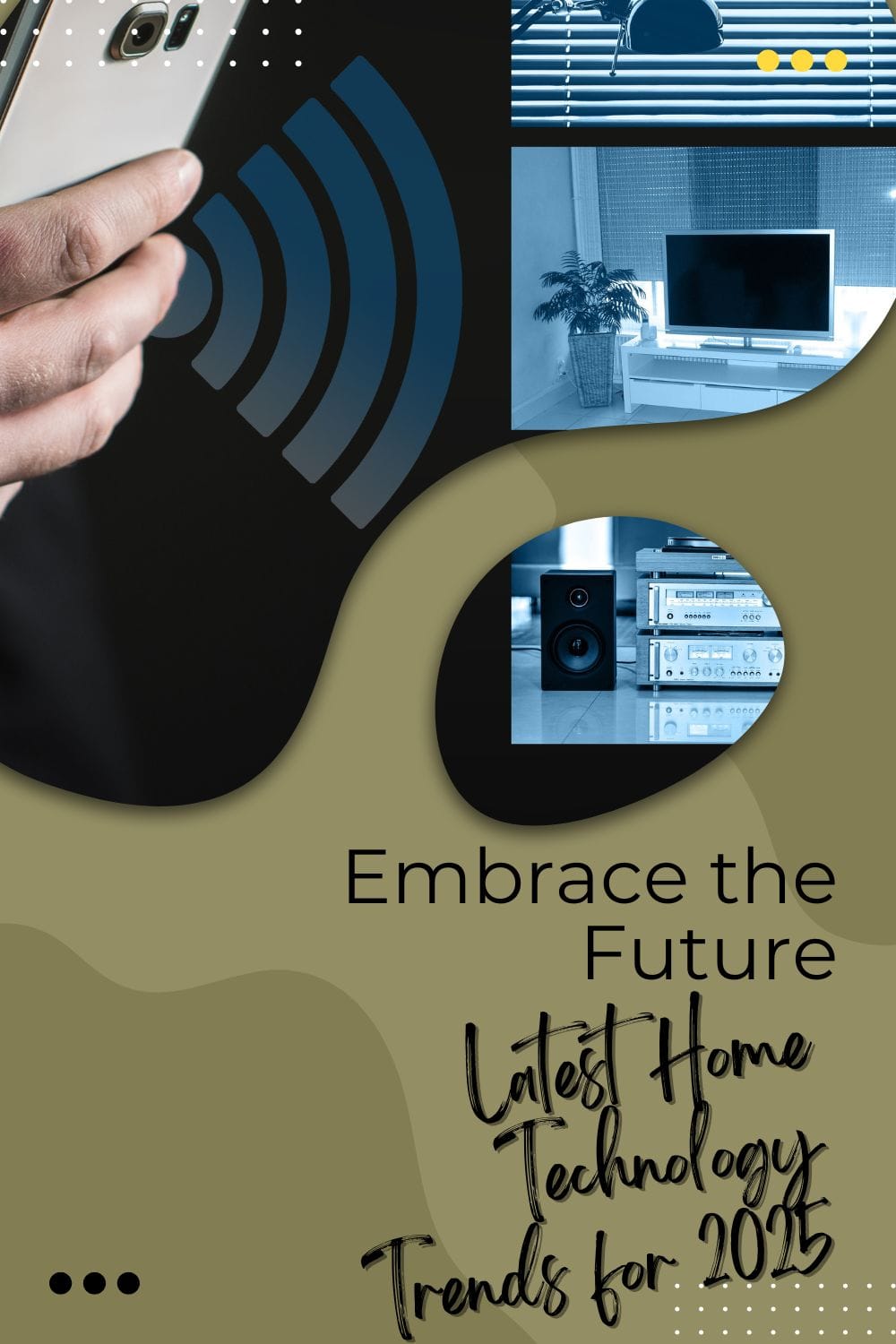In 2025, the idea of a smart home is no longer futuristic—it’s here, and it’s evolving rapidly. Home technology is transforming how we live, work, and interact with our environments. Driven by artificial intelligence, enhanced connectivity, and a growing emphasis on sustainability, smart homes are becoming more personalized, efficient, and intuitive.
From automated lighting and health-monitoring systems to security features and intelligent appliances, the modern home is learning, adapting, and working for you. In this guide, we explore the top home technology trends for 2025, along with a look at some of the most innovative devices that are setting the pace.
Seamless Smart Home Ecosystems
The Age of Unified Control
One of the biggest breakthroughs in smart home innovation is the emergence of unified systems that allow all devices—regardless of brand—to work together harmoniously. This is largely driven by universal standards, making interoperability simpler and more reliable.
What This Means for Homeowners:
- Fewer apps to manage
- Centralized control hubs
- Easier setup and configuration
Trending Devices:
- Amazon Echo Hub – A control center that manages lighting, security, and climate in one interface.
- Apple HomePod mini – Offers ultra-fast response and seamless integration with Apple devices.
AI for Health and Wellness Monitoring
Your Home as a Health Ally
Health technology is no longer confined to hospitals or wearables. Smart homes in 2025 integrate health features like sleep tracking, air quality monitoring, and real-time biometrics.
Key Capabilities:
- Detect early signs of illness
- Monitor sleep patterns and adjust lighting accordingly
- Track respiratory quality and alert you to poor indoor air conditions
Trending Devices:
- Withings Sleep Analyzer – Tracks breathing, heart rate, and sleep cycles.
- Airthings View Plus – Measures radon, CO₂, particulate matter, and more.
Intelligent Energy Efficiency and Sustainability
Smarter Living, Greener Planet
As climate awareness grows, so does the desire to reduce home energy consumption. Smart homes in 2025 are equipped with tools to optimize energy usage in real time, helping homeowners cut costs and their carbon footprint.
What’s New:
- Solar panel integration with home automation
- AI that predicts and reduces power usage during peak hours
- Automated thermostat adjustments based on your habits
Trending Devices:
- Google Nest Renew – Automatically shifts energy usage to cleaner times of the day.
- Emporia Energy Monitor – Real-time tracking of energy consumption by circuit.
Next-Level Security with AI and Biometrics
Home Security That Thinks
Forget basic alarms. The latest smart security systems use facial recognition, voice authentication, and behavior analysis to protect your home.
Security Innovations:
- Real-time motion alerts with AI filtering to avoid false alarms
- Facial recognition access control
- Integration with emergency services for faster response times
Trending Devices:
- Eufy Security Video Doorbell Dual – Uses facial recognition and package detection.
- August Smart Lock Pro – Allows biometric and smartphone-controlled entry.
Smart Kitchens and Cooking Assistants
Where AI Meets the Art of Cooking
The kitchen is now a central hub of innovation. AI-powered appliances assist with cooking, cleaning, and managing groceries.
What’s Changing:
- Appliances that recommend recipes based on what’s in your fridge
- Voice-activated ovens and coffee makers
- Dishwashers that measure how dirty dishes are before choosing a cycle
Trending Devices:
- Brava Smart Oven – Uses infrared light to cook meals perfectly and quickly.
Entertainment That Adapts to You
A Personalized Cinema Experience
Entertainment systems have evolved from static setups to dynamic environments that adjust based on your mood, preferences, and viewing habits.
Features Include:
- Lighting that changes with scenes in a movie
- Surround sound that adapts to room layout
- Personalized content recommendations through AI
Trending Devices:
- LG OLED C4 TV – Delivers stunning visuals with AI-enhanced viewing modes.
- Sony HT-A9 Surround System – Automatically calibrates sound based on room acoustics.
Touchless Control with Voice and Gesture Interfaces
Intuitive Control at Your Fingertips (or Not)
Voice assistants have become standard, but 2025 homes are taking it a step further with gesture recognition, eye-tracking, and spatial awareness.
New Interface Trends:
- Hand-wave light controls
- Voice control with regional dialect support
- Eye-tracking for switching channels or turning pages on e-readers
Trending Devices:
- Josh.ai Voice Assistant – Offers privacy-focused, high-level voice automation.
- Nobi Smart Lamp – Uses gestures to turn on/off and monitors for falls in elderly care.
5G and IoT Expansion
The Fast Lane of Connectivity
With 5G now mainstream, smart homes can support dozens—even hundreds—of connected devices without a hitch.
Benefits of 5G in Smart Homes:
- Faster data transfer between devices
- Ultra-low latency for real-time control
- Stronger network reliability and bandwidth
What It Enables:
- Smart cameras that stream in 4K without lag
- Remote diagnostics for appliances
- Seamless AR/VR experiences
9. Smart Furniture and Décor Integration
Tech That Blends with Your Aesthetic
Modern smart homes no longer sacrifice style for functionality. Instead, technology is being woven into the furniture and fixtures themselves.
Examples of Integration:
- Smart mirrors that display news and weather
- Couches with built-in wireless charging ports
- Beds that track sleep and adjust firmness throughout the night
Trending Devices:
- HiMirror Slide – A smart beauty mirror with skin analysis and smart lighting.
- Sleep Number 360 Smart Bed – Adjusts firmness and monitors health metrics.
Intelligent Water Management
Every Drop Counts
Water conservation is no longer optional. Smart homes use intelligent irrigation, leak detection, and usage analytics to make sure every drop is used wisely.
Features in Demand:
- Smart sprinkler systems that adjust based on the weather
- Leak sensors under sinks and near water heaters
- Real-time usage alerts and comparisons
Trending Devices:
- Phyn Plus Smart Water Assistant – Detects leaks and shuts off water automatically.
- Rachio 3 Smart Sprinkler Controller – Syncs with weather forecasts to optimize irrigation.
Aging in Place with Assistive Technology
Independence Meets Innovation
2025’s smart homes are also designed to support elderly residents through features that promote independence, safety, and well-being.
Assistive Technologies Include:
- Voice-activated medication reminders
- Fall detection sensors with emergency alerts
- Smart hearing aids that integrate with entertainment systems
Home Offices Powered by AI
The Work-from-Home Revolution Continues
With remote work more prevalent than ever, home office tech has reached new heights in 2025. Smart setups reduce distractions, improve comfort, and enhance productivity.
Smart Office Features:
- Lighting that adjusts to your focus levels
- AI-enhanced webcams that track engagement
- Noise-canceling systems built into walls or windows
The Road Ahead
Smart homes in 2025 are defined by integration, intelligence, and individualization. These spaces are no longer simply connected—they are context-aware and user-responsive, making life more convenient, safe, and sustainable.
Whether you’re a tech enthusiast or a homeowner just starting out with smart devices, the opportunities are vast. From AI-powered health monitors to energy-saving innovations, the home of the future is here—and it’s working harder than ever for you.
Quick Tips Before You Upgrade:
- Start small – Begin with one room or feature (like lighting or security).
- Focus on compatibility – Choose devices that support broad ecosystems.
- Secure your network – Use strong passwords and keep software updated.
- Think long-term – Invest in devices that receive regular updates and support.
Final Thought
The smart home of 2025 isn’t just about automation—it’s about living better. By making our homes more responsive, efficient, and health-conscious, we’re not only improving daily convenience but also building toward a more sustainable and empowered future.
You might also like,

